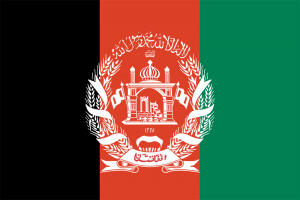Language/Central-pashto/Grammar/Present-Continuous
Introduction
In this lesson, you will learn about the present continuous tense in Central Pashto. The present continuous is used to describe actions that are happening at the moment of speaking. We will cover the formation of the present continuous tense, including how to conjugate verbs and use them in sentences. Additionally, we will provide you with cultural information and interesting facts about the Pashtun people and their traditions.
Formation of the Present Continuous Tense
The present continuous tense in Central Pashto is formed using the following structure:
Subject + Verb "to be" in the present tense + Verb in the present participle (-ing form)
For instance, to say "I am eating" we would use the following sentence structure:
ما يو ادمه خوريووه (Mā yo adma khōryawā)
Here, "ما" (mā) means "I," "يو" (yo) is the present tense form of the verb "to be," and "ادمه خوريووه" (adma khōryawā) is the present participle of the verb "to eat."
Present Tense Forms of "to be"
Let's take a look at the present tense forms of the verb "to be" in Central Pashto:
| Central Pashto | Pronunciation | English |
|---|---|---|
| زه ده يم | zə dah yam | I am |
| ته ده ي | tə dah yə | You are (singular) |
| وه ده ي | wə dah yə | He/She/It is |
| مونږ ده څه دي | munǧ dah tsah day | We are |
| زه ده ي | zə dah yə | You are (plural) |
| وو ده يني | waw dah yəne | They are |
Note that the first and fourth forms are used to indicate "I" and "we," respectively. The remaining forms are used for singular and plural "you," and "he/she/it" and "they," respectively.
Present Participle (-ing Form)
To form the present participle in Central Pashto, simply add "-ووه" ("-wā") to the stem of the verb. For instance, the stem of the verb "to eat" is "خور" ("khōr"). We add "-ووه" ("-wā") to the end to form the present participle, which is "خوريووه" ("khōryawā")
Take a look at the following table that showcases the present participles of some common verbs:
| Central Pashto | Pronunciation | English |
|---|---|---|
| خوريووه | khōryawā | Eating |
| ورکشيووه | wrakshyāwā | Working |
| هيليووه | hēlyawā | Heling |
| توريووه | tōryawā | Running |
Using Present Continuous Tense in Sentences
Now that we know how to form the present continuous tense in Central Pashto, let's see how we can use it in sentences.
The present continuous tense is used to describe an action that is currently taking place. For example:
څوک انځور يو ورځم د آوخنه کي په لنډي خوب وکړيوه (Tsuk anzhōr yo warz̤am da awkhana ki pə ləndi khōb wakréyo) - The guest is cooking delicious food in the kitchen today
In this example, we use the present continuous tense to describe the guest's current activity.
You can also use the present continuous tense to describe actions that are happening right now. For instance:
زه هم په ساعتونو کې دپاره ده دا کتاب ووړلوي (zə ham pə sā`atuno kə dapāra dah da ktab wawṛalawi) - I am reading this book right now.
You can also use the present continuous tense to describe events that will happen in the future. For instance:
په شنبه هغه سفره کورول شي وري چه د وينو خوړ وه (Pa shanbə haghə safrah kawrawal shi wəri tsah da wīno khwṛa wā) - He will be cooking dinner on Saturday and serving wine.
Let's practice by conjugating some verbs in the present continuous tense:
| English | Central Pashto |
|---|---|
| I am running | ما يو توريووه (Mā yo tōryawā) |
| You are sleeping | ته ده ي خواب ده (Ta dah yə khwāb dah) |
| He/She/It is studying | هغه د مطالعه وخت دی (Haghə da mataale'a wakht day) |
| We are eating | مونږ يو خوريووه (Munǧ yo khōryawā) |
| You are singing | زه ده ي غږ يووه (Zə dah yə ġaǧh yawā) |
| They are playing | دا وو دى د لوبې پېليږي (Da waw də lōbe peleyaǧey) |
Pashtun Cultural Information
Central Pashto is a language spoken by the Pashtun people living mainly in Afghanistan and Pakistan. The Pashtun people are well known for their hospitality, bravery, and tribal structure. They are also known for traditional practices such as Jirga, where elders gather to discuss and make decisions on major issues affecting the community. Pashtuns typically wear traditional clothing, which is significant to Pashtun culture.
The traditional clothing for Pashtun men includes a long shirt called a "perahan tunban," which is usually worn with baggy pants called "shalwar." The perahan tunban can be plain or embroidered, and the colors vary depending on the region. The traditional clothing for women includes a long dress called a "firaq," which is brightly colored and usually heavily embroidered with intricate designs.
Pashtun cuisine is influenced by the local produce and traditional practices of the region. Some of the famous Pashtun dishes include Kabuli Palaw (a rice dish with meat and raisins), Kofta (meatballs), and Mantu (steamed dumplings filled with ground beef and onions). Dairy products such as Lassi (a yogurt drink) and Quroot (dried cheese) are also popular.
Conclusion
Congratulations! You have learned how to form the present continuous tense in Central Pashto. You are now able to conjugate verbs and use them in sentences to describe actions happening at the moment of speaking. In addition, you have gained knowledge about the Pashtun people and their traditions. Remember to practice regularly to become more confident in using the present continuous tense in your speech and writing.

